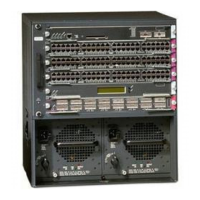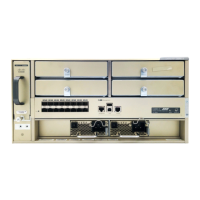8-2
Catalyst 6500 Series Content Switching Module Configuration Note
OL-4612-01
Chapter 8 Configuring Additional Features and Options
Configuring Route Health Injection
Router(config-slb-policy)# sticky-group
1
Router(config-slb-policy)# exit
Router(config-module-csm)# vserver
vs_sticky_ck
Router(config-slb-vserver)# virtual 10.8.0.125 tcp 90
Router(config-slb-vserver)# slb-policy
policy_sticky_ck
Router(config-slb-vserver)# inservice
Router(config-slb-vserver)# exit
Configuring Route Health Injection
These sections describe how to configure route health injection (RHI):
• Understanding RHI, page 8-2
• Configuring RHI for Virtual Servers, page 8-4
Understanding RHI
These sections describe the RHI:
• RHI Overview, page 8-2
• Routing to VIP Addresses Without RHI, page 8-3
• Routing to VIP Addresses with RHI, page 8-3
• Understanding How the CSM Determines VIP Availability, page 8-3
• Understanding Propagation of VIP Availability Information, page 8-4
RHI Overview
RHI allows the CSM to advertise the availability of a VIP address throughout the network. Multiple
CSM devices with identical VIP addresses and services can exist throughout the network. One CSM can
override the server load-balancing services over the other devices if the services are no longer available
on the other devices. One CSM also can provide the services because it is logically closer to the client
systems than other server load-balancing devices.
Note RHI is restricted to intranets because the CSM advertises the VIP address as a host route and most routers
do not propagate the host-route information to the Internet.
To enable RHI, configure the CSM to do the following:
• Probe real servers and identify available virtual servers and VIP addresses
• Advertise accurate VIP address availability information to the MSFC whenever a change occurs
Note On power-up with RHI enabled, the CSM sends a message to the MSFC as each VIP address
becomes available.
The MSFC periodically propagates the VIP address availability information that RHI provides.

